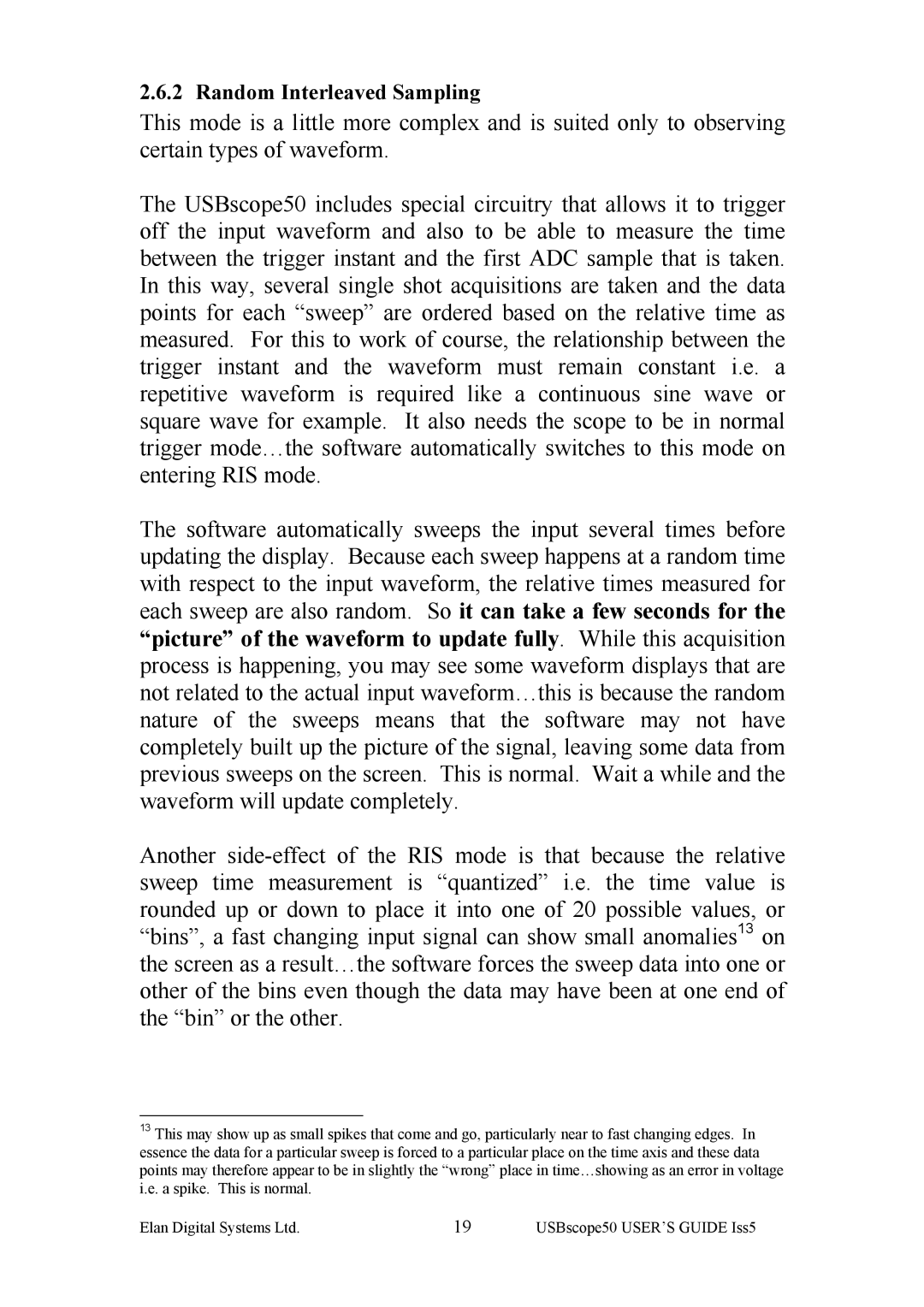2.6.2 Random Interleaved Sampling
This mode is a little more complex and is suited only to observing certain types of waveform.
The USBscope50 includes special circuitry that allows it to trigger off the input waveform and also to be able to measure the time between the trigger instant and the first ADC sample that is taken. In this way, several single shot acquisitions are taken and the data points for each “sweep” are ordered based on the relative time as measured. For this to work of course, the relationship between the trigger instant and the waveform must remain constant i.e. a repetitive waveform is required like a continuous sine wave or square wave for example. It also needs the scope to be in normal trigger mode…the software automatically switches to this mode on entering RIS mode.
The software automatically sweeps the input several times before updating the display. Because each sweep happens at a random time with respect to the input waveform, the relative times measured for each sweep are also random. So it can take a few seconds for the “picture” of the waveform to update fully. While this acquisition process is happening, you may see some waveform displays that are not related to the actual input waveform…this is because the random nature of the sweeps means that the software may not have completely built up the picture of the signal, leaving some data from previous sweeps on the screen. This is normal. Wait a while and the waveform will update completely.
Another
13This may show up as small spikes that come and go, particularly near to fast changing edges. In essence the data for a particular sweep is forced to a particular place on the time axis and these data points may therefore appear to be in slightly the “wrong” place in time…showing as an error in voltage i.e. a spike. This is normal.
Elan Digital Systems Ltd. | 19 | USBscope50 USER’S GUIDE Iss5 |
